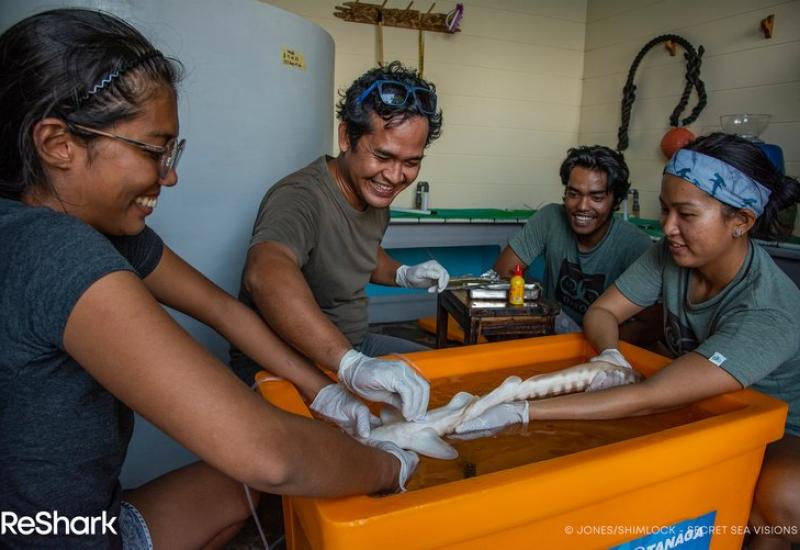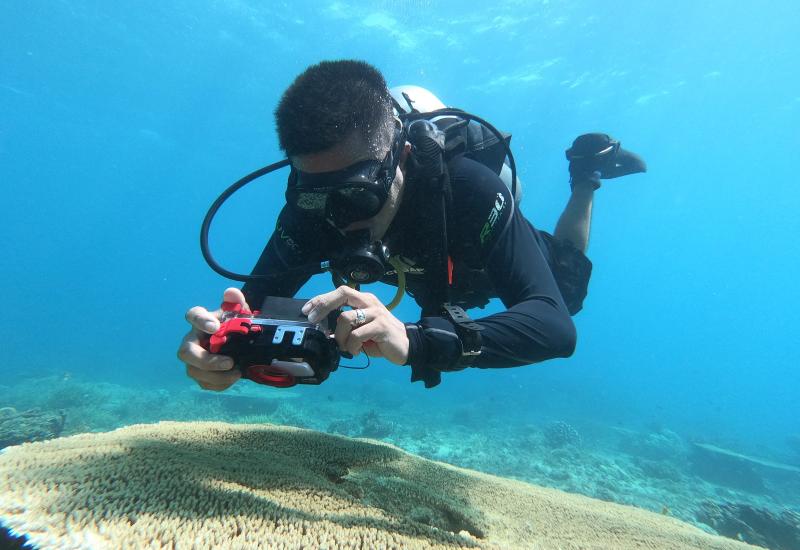The Sound of (Reef) Music
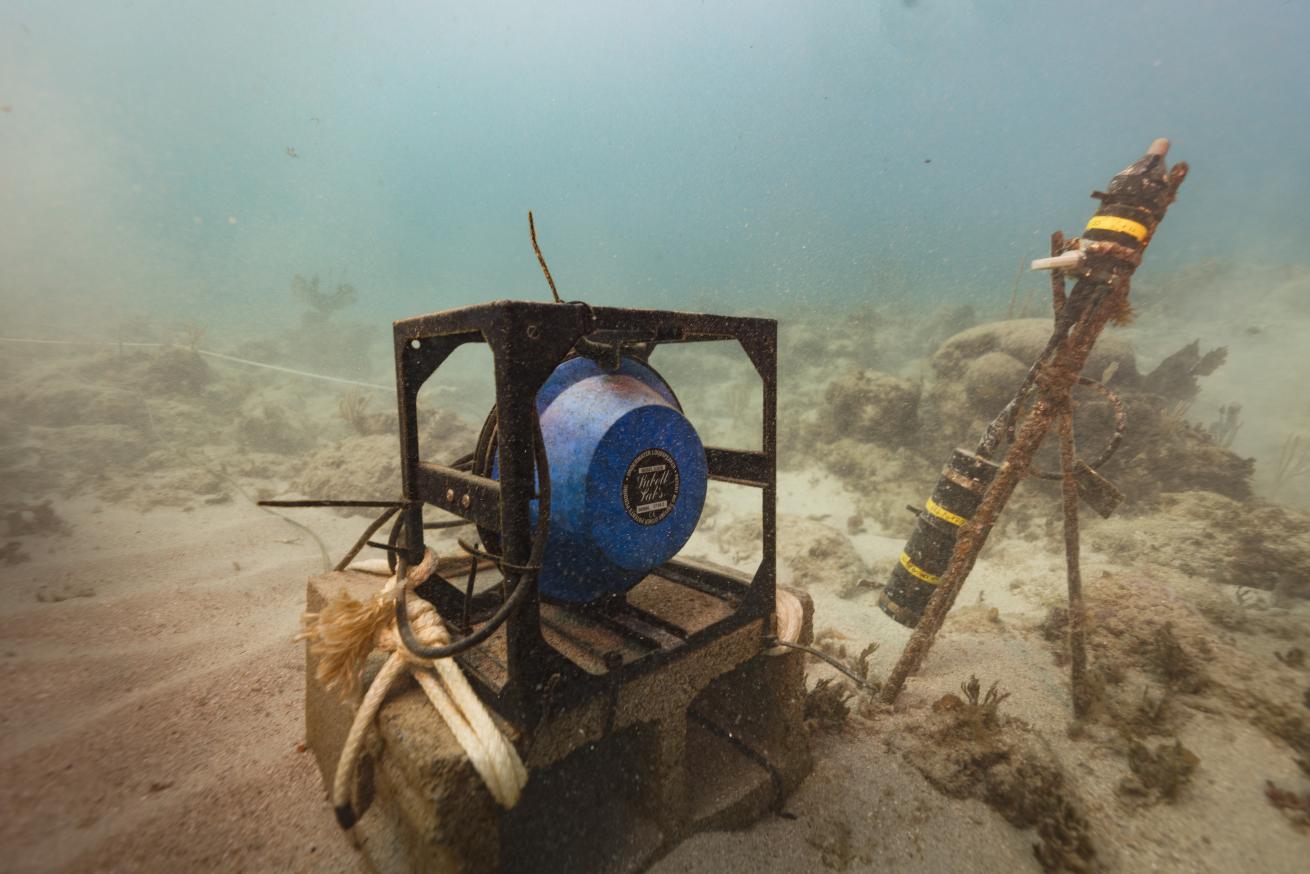
Dan Mele, ©Woods Hole Oceanographic InstitutionReef Solutions, a technology-centric Woods Hole Oceanographic Team, works to build an underwater device that can play sound.
In the fight to save corals, the solution may lie in sound.
Woods Hole Oceanographic Institution (WHOI) associate scientist Aran Mooney learned that some rainforest researchers turned to studying noise to determine the health of these threatened environments. He hypothesized a similar connection between sound and the health of reefs.
Reefs are every bit as rich as rainforests when it comes to sound. Any diver who has descended on a reef has heard snapping shrimp tightening their claws to deter predators, parrotfish scraping their beak-like fused teeth across corals and possibly even a grouper grunting.
Mooney, working with Reef Solutions, a technology-centric WHOI team, wanted to know if coral larvae use sound as a tool to avoid bleached, damaged coral colonies in favor of healthier, safer and more attractive reef colonies on which to establish themselves.
“Think about a teenager’s room—it smells bad, it’s dark and the noise isn’t right because there’s normally music blasting,” he says.
Setting up for sound
Mooney and the team first devised a device capable of recording the reef goings-on, including the tiniest sounds imperceptible to divers.
They listened for the less detectable sounds that only recording devices and divers on rebreathers, with their quieter features, can pick up— like the trill emitted by the domino damselfish, found in the Indo-Pacific and Red Sea, as it defends its territory. Additionally, the device can pick up sounds that can only be heard in labs, where amplification is possible—like the swoosh of a butterfly fish flicking its tail.
The team then headed to the southern coast of St. John in the U.S. Virgin Islands, using the Tektite habitat, home of the country’s first scientists-in-the-sea program dating back to 1969. They hit “record,” and waited for the results.
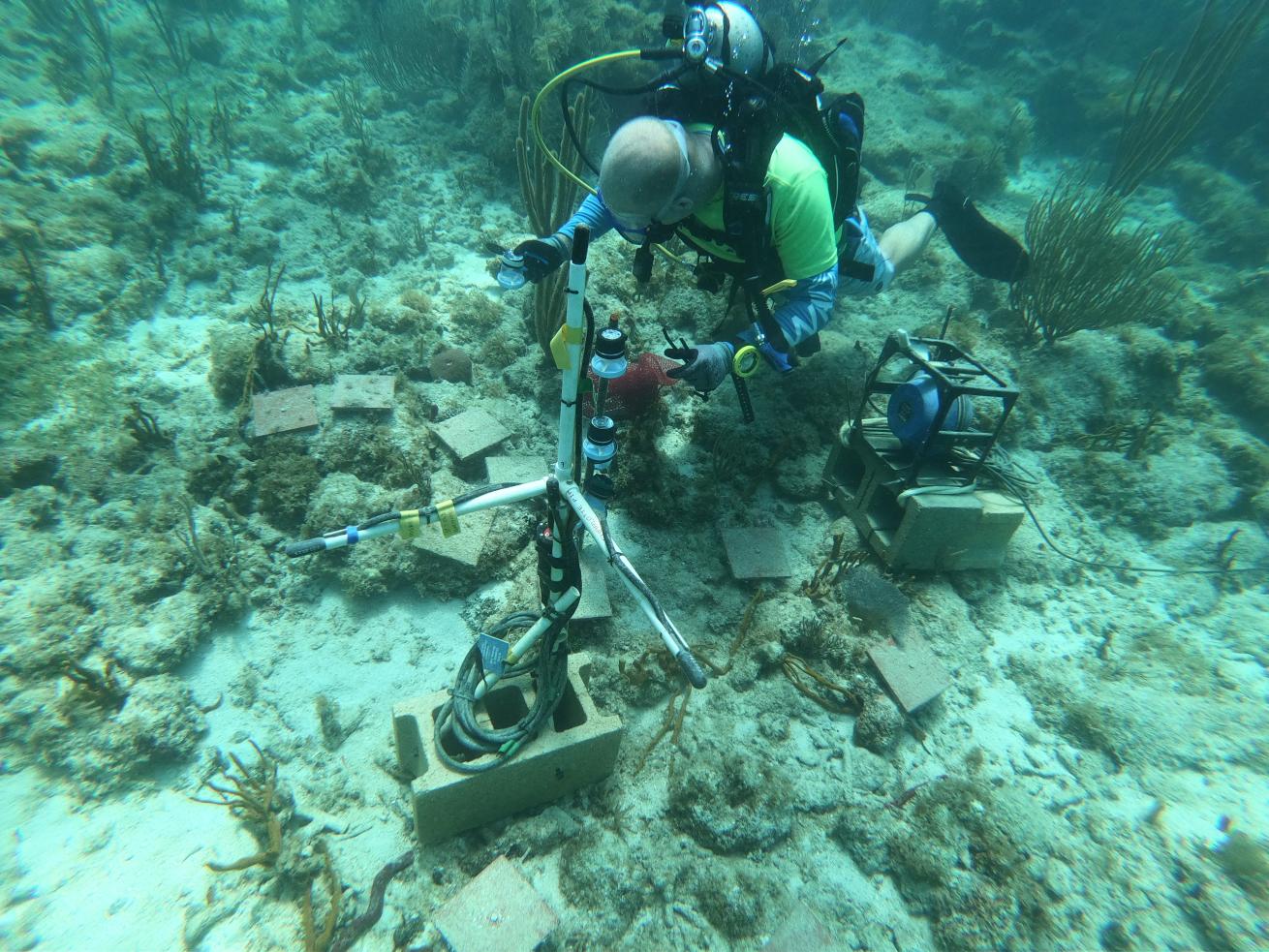
Nadege Aoki, ©Woods Hole Oceanographic InstitutionA diver deploys the cups filled with coral larvae, where they will measure the amount of coral settlement on terracotta tiles and compare the results between this study site and a site without the speaker.
A concert for corals
The next question was: If coral larvae do rely on noise, what sounds do they respond the most positively toward?
“We need to fix the noise problems on reefs to make them more attractive to the coral,” says Mooney.
The team assessed what constituted a good recording, indicative of a healthy ecosystem, and created a way to play back the recordings underwater where coral larvae could respond using a solar-powered speaker attached to a buoy. The speaker system contains a micro SD card and plays the reef recordings into the surrounding patch of ocean.
Related Reading: Scientists Discover Surprising News About the Fate of Coral Reefs in the Tropical Pacific Ocean
The study was designed to test the effectiveness of acoustic enrichment, comparing a reef where recordings of a robust reef system were played to a reef of similar health where no sounds were played. Coral larvae were placed inside small plastic cups to isolate them from chemical cues and were introduced to both reefs. Then, the team measured how many baby corals settled on tiny terracotta tiles placed on each reef. These terracotta tiles served as the means of collecting the coral settlement and transporting it back to the lab.
The study ultimately proved that playing healthy reef sounds drew in greater numbers of coral larvae, aiding in bigger colonies to help build a more thriving reef ecosystem.
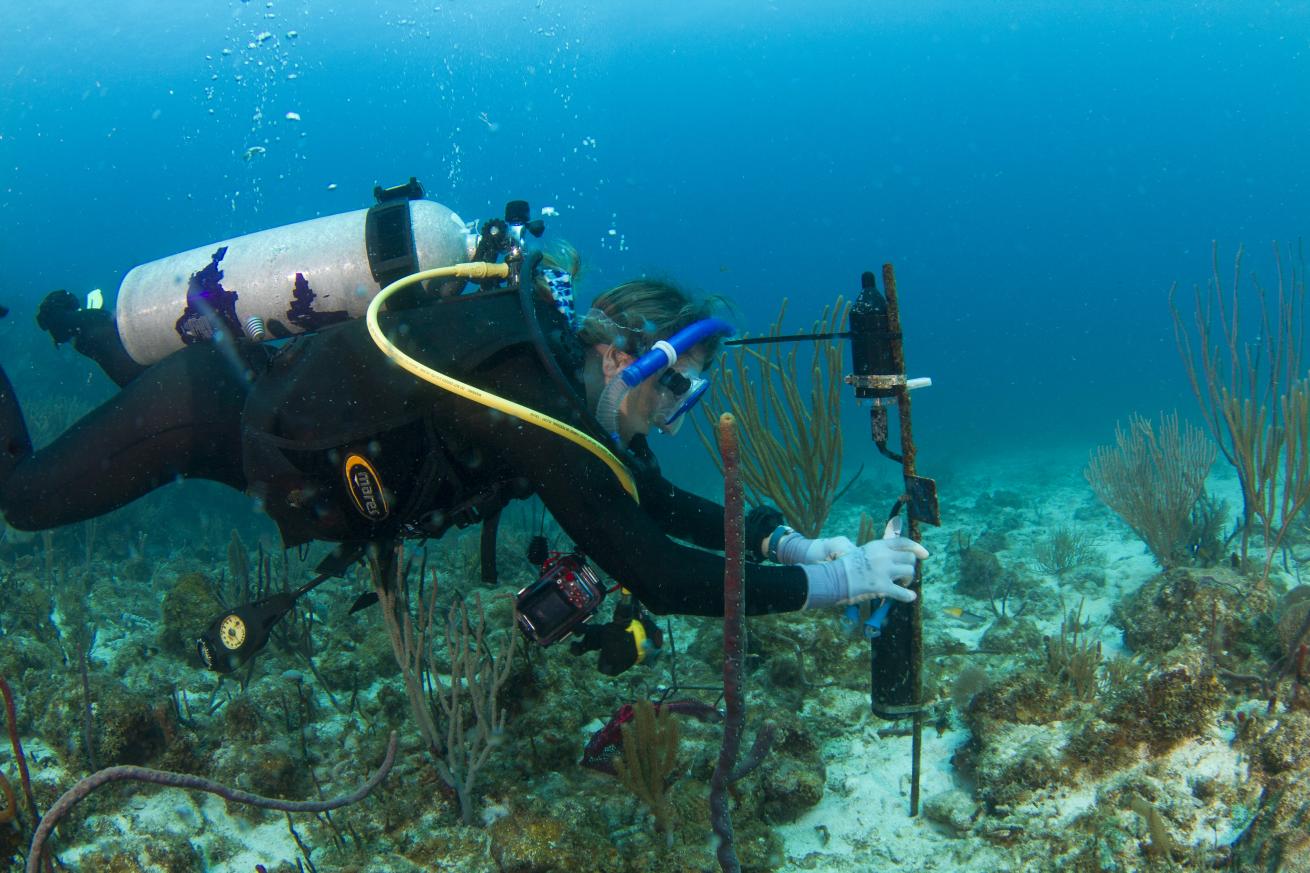
Woods Hole Oceanographic InstitutionAlthough more studies are needed, the team found success in the number of coral larvae that settled with the aid of sound.
Next step: taking the show on the road
A win on just one reef is only the beginning. Long term, Mooney envisions that this technology could be deployed as a low-cost, reproducible acoustic system that anyone working with marine protected areas or dive centers could easily use to promote massive coral growth around the globe.
The team is currently working on feasibility studies to determine how this technology could be applied to a variety of coral species and oceans. So far, the system has proven successful with mustard and golf ball corals at depths averaging 30 feet. For now, more testing is needed.
Related Reading: A Coral Disease is Spreading Through World's Second-Largest Barrier Reef
“It’s not quite ready for prime time,” Mooney says. “We want to make sure we are not attracting things to the reef that we don’t want.” He estimates that it might be another five years until the team’s vision of replacing most mooring balls with these floating speaker systems becomes a reality. Additionally, more work is needed to assess how to create the unit at a manageable cost.
Mooney remains hopeful, especially considering that his underwater recordings were all taken in 2013—well before hurricanes Irma and Maria in 2017 wreaked havoc on reefs throughout the Caribbean.
When considering the sounds of the reefscape, Mooney says, “We are able to do better than the natural environment.”

